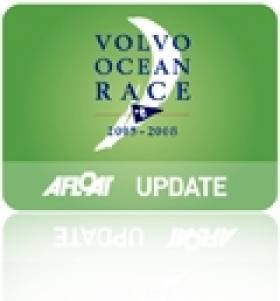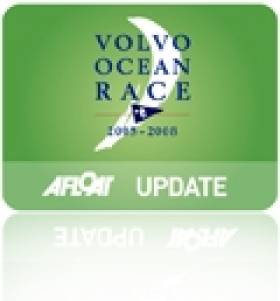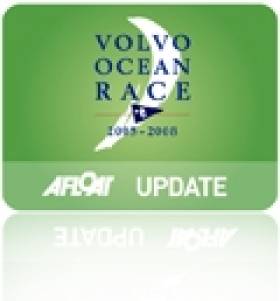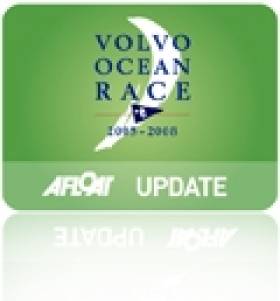Displaying items by tag: Team SCA
Tributes Paid to Swedish Yachting Legend Magnus Olsson
#VOR - The sailing world has paid tribute to Volvo Ocean Race coach and round-the-world yachting legend Magnus Olsson, who has passed away from a stroke at the age of 64.
Olsson was a long-time veteran of the Volvo Ocean Race (VOR), beginning in 1985 when it was known as the Whitbread Round The World Race and last competing in the 2008-09 edition.
Most recently he was coaching the all-women Team SCA in their preparations for the 12th edition of the race starting this summer.
"It's with great sadness I received the news about Magnus passing away," said VOR chief Knut Frostad. "He was my mentor when I sailed around the world with him 20 years ago.
"He was the inspiration for me and for so many more and more than anything he was the smile of the race," he continued. "A true friend has left on his final leg and the sailing world will never be the same without Magnus and his smile. Never. My thoughts are with his two sons and his close family today."
Olsson - known to friends as 'Mange' - was born on 4 January 1949 and grew up near Stockholm. He began sailing on Lake Mälaren aged eight and learned his trade in OK Dinghy, Trapez and 505s, winning three Swedish national titles in the latter.
Before beginning his round-the-world career he also served as crew on Sverige in the 1976 America's Cup.
The Volvo Ocean Race website has further tributes from world sailing luminaries HERE.
Lorient Stopover Completes Next VOR Race Route
#VOR - Lorient in France completes the route for the next edition of the Volvo Ocean Race.
Like last year, the Brittany port city will be the penultimate stopover for the race fleet when they sail in at some point in mid June 2015.
But rather than a return to Galway, the race will continue on to the new finish line at Gothenburg in Sweden - as announced by race organisers in February.
“This route has never really been part of any ocean race any time before,” said Volvo Ocean Race CEO Knut Frostad. “And when you have that element there’s a new strategy, there’s a new route, there’s new weather, there’s new challenges for the sailors.
"That is exciting, not only for us but for the sailors because no-one can claim they’ve done this before.”
The 12th edition of the Volvo Ocean Race begins on 4 October this year with the first in-port race in Alicante.
In other VOR news, Team SCA has selected the first five members of its all-woman team for the global yachting challenge.
Britons Sam Davies and Annie Lush will be joined by Dutchwoman Carolijn Brouwer and Aussie par Sophie Ciszek and Liz Wardley on the squad that marks the first female-only crew in the race for more than a decade.
First Candidates For All-Female VOR Team Sail to Lanzarote
#VOR - The first candidates for places on Team SCA's all-female team for the next edition of the Volvo Ocean Race are currently sailing on a training leg from Southampton to Lanzarote.
The Volvo Ocean Race website spoke to one of the hopefuls, Vendee Globe veteran Sam Davies, who described the team's plans to field the first women-only team in the VOR as "an amazing opportunity for me and woman's sailing in general, especially for women ocean racers."
She's joined on the VOR 70 training vessel - which sports the team's recently unveiled livery ahead of the completion of their VOR 65 yacht - by fellow Brit sailor Annie Lush, Carolijn Brouwer and Klaartje Zuiderbaan from the Netherlands, Jeanne Gregoire from France, and Liz Wardley and Stacey Jackson from Australia.
Davies said of the team selection that it's "a two-way process... the managers are looking at all of us and we're testing it out to see if it is really what we want to do."
Team SCA managing director Richard Brisus said of the first trainee voyage to the team's base at Puerto Calero: "We have set out to work with the world’s best female offshore sailors and create a strong group of women that also has the ability to work well together as a high-performing team."
A second group of candidates will head out to sea shortly, and Team SCA coach Magnus Olsson said it "would be fantastic if we could find our team from these two groups.
“They are a remarkable group of women and each brings a very high level of skill sets to a potential team."
Volvo Ocean Race Returns to Brazil for 2014-15
#VOR - Organisers of the Volvo Ocean Race have announced that the Brazilian state of Pernambuco will enter a team in the next edition of the round-the-world offshore challenge in 2014-15.
In addition, its capital city of Recife will be the first stopover port along the race route, which starts in Alicante in the second half of next year.
The Recife team is only the second publicly announced team for the 12th edition of the VOR, following the SCA all-women's team announced last August.
Details about the stopover and the team, including the identity of the skipper, will be announced in the coming weeks.
“[The] announcement of the Pernambuco team and Recife stopover are fantastic news for the race,” said Volvo Ocean Race CEO Knut Frostad. “I’m delighted to see the Race strengthen our ties with Brazil, Recife and Pernambuco in this way.
"Coming to Recife at the end of Leg 1 means there will be a lot of attention on this great city and having a Brazilian team in the race will be fantastic for fans across the country."
The decision to make Leg 1 of the route from Alicante to Recife means the VOR will be visiting Brazil in one of the biggest sporting eras in the nation's history – just a few months after the country hosts the 2014 Fifa World Cup and less than two years before the Olympic Games in Rio.
Recife was one of over 80 ports to express an interest in hosting the race when the bid process was launched in 2012. The deal announced yesterday will see Recife host the race for the next two editions.
The last Brazilian team to enter the Volvo Ocean Race was Brasil 1 in 2005-06. Torben Grael was the skipper and Knut Frostad, now the Volvo Ocean Race's CEO, featured as a crew member on some of the legs. The Brazilian campaign proved to be a big success and generated great interest worldwide and in the media. Grael went on to win the Volvo Ocean Race as skipper of Ericsson 4 in 2008-09.
The Volvo Ocean Race's links with Brazil date back to 1973, when the first edition of what was then known as the Whitbread Round the World Race stopped at Rio de Janeiro.
The race also visited Rio in the second edition in 1977-78 and again in 2001-02, 2005-06 and 2008-09. In 1997-98 the race stopped at São Sebastião and in the last edition in 2011-12, Itajaí was a host port.
Meanwhile, Team SCA have unveiled the livery for their VOR 65 new design when it is launched and ready to race later this year.
As previously reported on Afloat.ie, the new design VOR 65 - priced at €4.5 million, about 20% less expensive than the 70-footer that ended its run in Galway last summer - was developed with the idea of reducing the costs of competing in the gruelling round-the-world yacht race.
The official VOR website has images of the SCA livery, with nature-inspired graphics and colours designed to reflect the eco-friendly values of the title sponsor, global hygiene company SCA.
At the beginning of February, a number of Team SCA women crew candidates will leave Southampton on a first test sail together with several leading off-shore coaches.
Team SCA have not yet revealed the identity of any of the crew, including the skipper.



























































